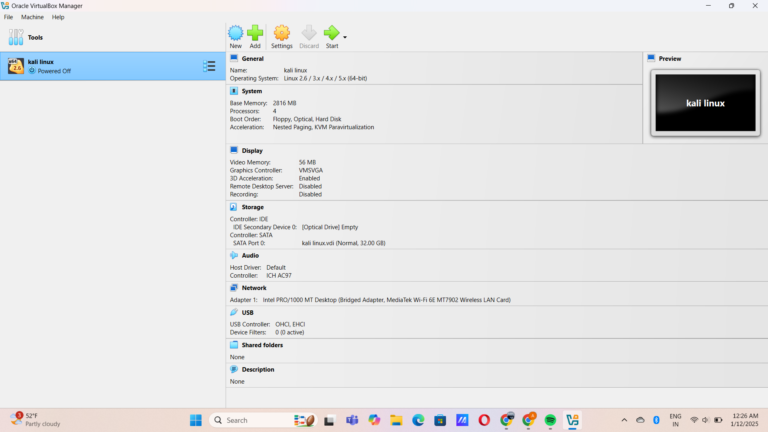Best Ways to Protect Your Business from Denial of Service Attack
Learn effective strategies to protect your business from Denial of Service attacks, ensuring service availability and safeguarding your reputation
What is a Denial of Service Attack?
A Denial of Service attack is an attempt to make a network resource unavailable to its intended users by overwhelming it with a flood of traffic. In a Distributed Denial of Service attack, the attack is distributed across multiple systems, making it harder to stop. DoS attacks aim to disrupt the availability of services such as websites, email servers, and other critical online infrastructure.

Why Protecting Your Business is Crucial or hard
A successful DoS attack can paralyze your online presence, causing downtime that leads to a loss of revenue, damaged brand reputation, and even legal repercussions. As the internet becomes a primary channel for business transactions, e-commerce, and customer interaction, keeping your systems available is paramount.
Best Ways to Protect Your Business from Denial of Service Attack
1. Implement a Web Application Firewall (WAF)
A Web Application Firewall (WAF) is an essential tool to protect your website and applications from a variety of threats, including Denial of Service Attack. WAFs filter and monitor HTTP traffic between a web server and the internet, blocking malicious requests.
Advantages:
- Provides real-time protection against a wide range of attacks, including DDoS.
- Can be customized to match the needs of specific applications.
- Reduces the risk of data breaches and downtime.
Disadvantages:
- May require expert configuration for optimal performance.
- Can sometimes lead to false positives, blocking legitimate traffic.
How it Performs: A WAF works by filtering incoming traffic to detect patterns that resemble DoS or DDoS attacks, such as sudden surges in requests. It can block or limit such traffic, ensuring that your website stays up and running even under attack.
2. Use Content Delivery Networks (CDNs)
A Content Delivery Network (CDN) distributes your website’s content across multiple servers located in different regions. This decentralization helps mitigate DoS attacks by reducing the load on a single server and spreading the traffic across a network of servers.
Advantages:
- Reduces server load during traffic spikes.
- Improves website performance and load times.
- Can absorb traffic from DoS attacks, especially DDoS.
Disadvantages:
- May require additional costs for setup and ongoing maintenance.
- Some CDN providers might have limits on data transfer and bandwidth.
How it Performs: In the event of a DDoS attack, the CDN’s global network of servers can absorb the attack traffic, ensuring that your primary servers are not overwhelmed. By caching content on multiple nodes, CDNs also reduce latency, ensuring that normal traffic is unaffected.
3. Rate Limiting
Rate limiting is the process of controlling the number of requests a user can make to your server within a certain period. This can be an effective method to mitigate DoS attacks that attempt to overwhelm your resources.
Advantages:
- Helps prevent server overload by limiting incoming traffic.
- Can be implemented with minimal cost and complexity.
- Protects against both DoS and brute-force attacks.
Disadvantages:
- Too strict rate limits can frustrate legitimate users.
- Requires fine-tuning to strike the right balance between security and user experience.
How it Performs: Rate limiting works by allowing only a certain number of requests per minute or hour from the same IP address. If an attacker sends a large volume of requests, they will be blocked or delayed, reducing the likelihood of a successful attack.
4. Use Anti-DDoS Services
Specialized Anti-DDoS services from cloud security providers such as Cloudflare, AWS Shield, or Akamai offer real-time protection against large-scale DDoS attacks. These services use advanced algorithms and large-scale networks to absorb and mitigate attack traffic before it reaches your servers.
Advantages:
- Can handle very large-scale DDoS attacks.
- Automatic detection and mitigation without manual intervention.
- Scalable protection for businesses of all sizes.
Disadvantages:
- Can be costly, particularly for small businesses.
- May not prevent smaller DoS attacks or attacks targeting specific vulnerabilities.
How it Performs: Anti-DDoS services work by redirecting your traffic through their distributed infrastructure, where they analyze incoming traffic patterns. If a DDoS attack is detected, the service can either block malicious traffic or reroute it to prevent it from overwhelming your infrastructure.
5. Over-provisioning Bandwidth
Over-provisioning refers to allocating more bandwidth to your servers than they typically require. This approach gives your systems more capacity to handle spikes in traffic, whether legitimate or from an attack.
Advantages:
- Simple and straightforward to implement.
- Provides extra capacity to handle unexpected traffic surges.
Disadvantages:
- Does not directly mitigate DDoS attacks.
- Can be costly, as it requires purchasing more bandwidth than you might typically use.
How it Performs: Over-provisioning ensures that your systems have extra capacity to withstand traffic surges, whether they come from legitimate sources or malicious actors. While not a foolproof solution, it can delay or prevent the impact of smaller DoS attacks.
Tools to Protect Your Business from DoS Attacks
Here are some effective tools and services designed to protect against DoS and DDoS attacks:
- Cloudflare: A popular CDN and security service that provides DDoS protection, web application firewall, and rate-limiting.
- AWS Shield: A comprehensive DDoS protection service by Amazon Web Services that helps protect applications running on AWS.
- Sucuri: A web application firewall and security monitoring service that provides real-time protection from malicious traffic.
- Radware DefensePro: A DDoS protection platform that uses behavior-based detection to block attacks.
- Incapsula: A cloud-based security service that provides DDoS protection, traffic monitoring, and mitigation tools.
A Denial of Service (DoS) attack is carried out with the primary goal of making a system, network, or service unavailable to its intended users. The attacker does this by overwhelming the target with more traffic than it can handle or exploiting a vulnerability in the target system to disrupt its normal operation.

1. Flooding the Target with Traffic
- Traffic-based DoS attacks work by sending massive amounts of traffic to a server or website. The target server’s bandwidth or resources (e.g., CPU, RAM) become exhausted by processing this influx of requests.
- The server becomes overwhelmed because it cannot handle so many requests at once. As a result, legitimate users trying to access the website or service experience delays or are unable to connect at all.
Common traffic-based DoS attacks include:
- UDP Floods: The attacker sends User Datagram Protocol (UDP) packets to random ports on the target machine. The target machine responds to each of these requests, consuming bandwidth and system resources.
- TCP SYN Floods: The attacker sends TCP connection requests (SYN packets) without completing the handshake, causing the server to wait for responses that never come. This can fill the server’s connection queue and make it unavailable to legitimate requests.
- HTTP Floods: The attacker sends a large number of HTTP requests to a web server, often mimicking normal web traffic, to exhaust server resources.
2. Exploiting Vulnerabilities
- Some DoS attacks take advantage of specific vulnerabilities in a system or application to make it crash or become unresponsive.
- These attacks may include:
- Buffer overflow attacks: Malicious code is inserted into memory buffers, causing them to overflow and disrupt the target system.
- Resource exhaustion: The attacker may try to exhaust server resources like memory or CPU, causing the system to slow down or crash.
- Ping of Death: The attacker sends malformed or oversized ping packets that cause a system to crash when they are processed.
3. Botnets for Distributed Denial of Service Attack (DDoS)
In Distributed Denial of Service attacks, multiple systems are used to launch an attack. The systems are typically part of a botnet—a network of compromised devices (computers, IoT devices, etc.) controlled by the attacker. This makes it harder to trace the attack to a single source and allows for a larger-scale attack.
- The attacker can control thousands or even millions of compromised devices to flood the target with traffic, making it extremely difficult for the target to mitigate the attack.
- DDoS attacks are far more potent than single-source DoS attacks because they can overwhelm the target system with a volume of traffic that no single server or security tool can handle.
4. Amplification Attacks
An amplification attack is a type of DoS attack where the attacker exploits vulnerable third-party servers to send a massive amount of data to the target.
- DNS amplification: The attacker sends small DNS requests to DNS servers with the victim’s address as the source IP. The DNS server responds by sending a much larger reply to the victim, amplifying the traffic sent to the victim.
- NTP amplification: Similar to DNS amplification, the attacker exploits the Network Time Protocol (NTP) to generate large amounts of traffic directed at the target.
These types of attacks can generate significant traffic relative to the small amount of initial data sent by the attacker, making them highly efficient.
5. Resource Depletion and Application Layer Attacks
In addition to network-level attacks, some Denial of Service Attack target specific application-layer vulnerabilities. These attacks don’t necessarily rely on overwhelming traffic, but instead exploit flaws in the application itself to degrade or interrupt service.
- Slowloris attack: This is a form of application-layer attack where the attacker opens many connections to a web server but never completes them. This ties up server resources, preventing it from handling legitimate requests.
- HTTP Request Flooding: By sending malformed or resource-intensive requests to a website or server, the attacker can slow down the server’s response time, making it unavailable for legitimate users.
6. Targeting DNS or Critical Infrastructure
DNS (Domain Name System) servers are vital for routing traffic to the correct websites. Attacking these servers can render a website or service unreachable.
- DNS Denial of Service Attack can involve overwhelming a DNS server with requests or poisoning its cache, preventing the correct resolution of domain names and making the website inaccessible.
How Does the Target Respond?
- Overloading Resources: The target system is unable to process all the incoming traffic or requests. Its resources (e.g., CPU, memory, network bandwidth) become saturated, leading to slowdowns or crashes.
- Service Unavailability: For the duration of the attack, the affected service is either intermittently available or entirely unavailable to legitimate users. Websites might become slow to load or may fail to load completely.
- Network Congestion: In traffic-based Denial of Service Attack, the sheer volume of data overwhelms the network infrastructure, leading to congestion and degraded performance for all users.
Defending Against Denial of Service Attack
The best way to defend against a DoS attack is through a multi-layered approach:
- Traffic Filtering: Web application firewalls (WAFs) and intrusion detection systems (IDS) can filter out malicious traffic and prevent attacks from reaching the target.
- Rate Limiting: Restricting the number of requests that can be made from a single IP within a time period can help mitigate Denial of Service Attack.
- Over-Provisioning: Increasing network capacity can help absorb the traffic spikes caused by an attack.
- Cloud-based Protection: Using services like Cloudflare or AWS Shield, which can distribute traffic and mitigate DDoS attacks.
- Redundancy: Implementing redundant systems and load balancers can ensure that if one server is taken down, the others can take over.
Conclusion
Denial of Service attack can be a nightmare for businesses, but with the right precautions, they don’t have to take your operations offline. Implementing a combination of Web Application Firewalls, CDNs, rate limiting, and specialized DDoS protection services can significantly reduce your vulnerability. While these solutions come with both advantages and limitations, when used strategically, they can help you safeguard your business and maintain uptime during even the most intense attacks.
Protecting your business from Denial of Service attack is not just about having the right tools, but also developing a comprehensive cybersecurity plan. Regular monitoring, timely updates, and staying informed about emerging threats will ensure your defenses stay strong and your operations continue smoothly.







Protecting your business from DoS attacks is crucial in today’s digital landscape. Implementing a multi-layered defense strategy can significantly reduce the risk of downtime and revenue loss. Regular monitoring and staying updated on emerging threats are essential for maintaining strong cybersecurity. How can businesses ensure their systems remain resilient against increasingly sophisticated DoS attacks? Given the growing economic instability due to the events in the Middle East, many businesses are looking for guaranteed fast and secure payment solutions. Recently, I came across LiberSave (LS) — they promise instant bank transfers with no chargebacks or card verification. It says integration takes 5 minutes and is already being tested in Israel and the UAE. Has anyone actually checked how this works in crisis conditions?
Protecting your business from DoS attacks is crucial in today’s digital landscape. Implementing tools like Web Application Firewalls and CDNs can significantly reduce vulnerabilities. Regular monitoring and staying updated on emerging threats are essential for maintaining strong defenses. A multi-layered approach ensures your operations remain uninterrupted even during intense attacks. How can businesses effectively balance cost and security when implementing these protective measures? German news in Russian (новости Германии)— quirky, bold, and hypnotically captivating. Like a telegram from a parallel Europe. Care to take a peek?